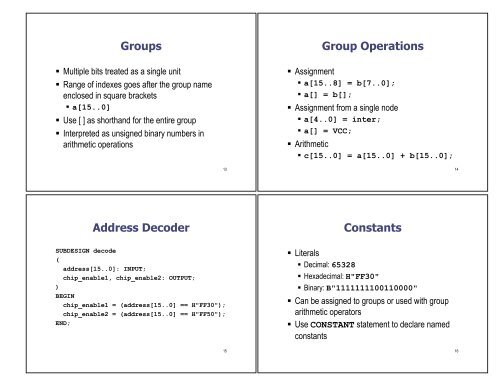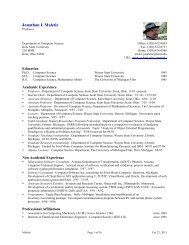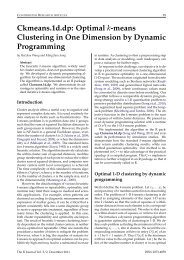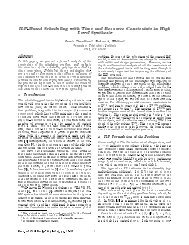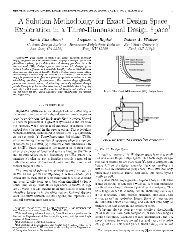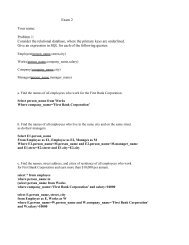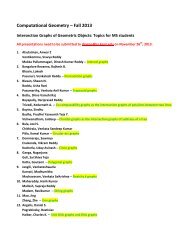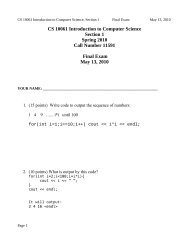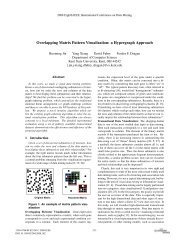Introduction to Design Using AHDL HDLs AHDL Subdesign Section
Introduction to Design Using AHDL HDLs AHDL Subdesign Section
Introduction to Design Using AHDL HDLs AHDL Subdesign Section
Create successful ePaper yourself
Turn your PDF publications into a flip-book with our unique Google optimized e-Paper software.
Groups<br />
! Multiple bits treated as a single unit<br />
! Range of indexes goes after the group name<br />
enclosed in square brackets<br />
! a[15..0]<br />
! Use [ ] as shorthand for the entire group<br />
! Interpreted as unsigned binary numbers in<br />
arithmetic operations<br />
Address Decoder<br />
SUBDESIGN decode<br />
(<br />
address[15..0]: INPUT;<br />
chip_enable1, chip_enable2: OUTPUT;<br />
)<br />
BEGIN<br />
chip_enable1 = (address[15..0] == H"FF30");<br />
chip_enable2 = (address[15..0] == H"FF50");<br />
END;<br />
13<br />
15<br />
Group Operations<br />
! Assignment<br />
! a[15..8] = b[7..0];<br />
! a[] = b[];<br />
! Assignment from a single node<br />
! a[4..0] = inter;<br />
! a[] = VCC;<br />
! Arithmetic<br />
! c[15..0] = a[15..0] + b[15..0];<br />
! Literals<br />
! Decimal: 65328<br />
Constants<br />
! Hexadecimal: H"FF30"<br />
! Binary: B"1111111100110000"<br />
! Can be assigned <strong>to</strong> groups or used with group<br />
arithmetic opera<strong>to</strong>rs<br />
! Use CONSTANT statement <strong>to</strong> declare named<br />
constants<br />
14<br />
16


